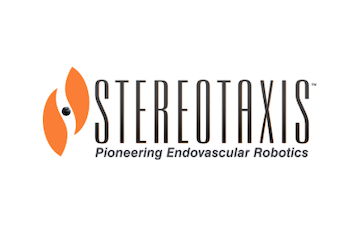
July 1, 2025 — Stereotaxis, a provider of surgical robotics for minimally invasive endovascular intervention, has announced the publication of initial clinical results using the MAGiC catheter in the Journal of Interventional Cardiac Electrophysiology. Titled “First In‑Human Results of the MAGiC Robotic Magnetic Navigation Radiofrequency Ablation Catheter,” the publication is the first peer-reviewed literature supporting the efficacy and safety of Stereotaxis’ MAGiC catheter.
“We are delighted to see the strong efficacy and safety profile of MAGiC published in a prestigious journal,” said David Fischel, Stereotaxis Chairman and CEO. “This publication supports our ongoing launch of MAGiC across Europe. We appreciate the pioneering electrophysiologists at Copenhagen University Hospital Rigshospitalet and Vilnius University Hospital Santaros Klinikos who made this possible.”
The prospective multi-center, single-arm study used MAGiC to treat patients with a broad spectrum of arrhythmia — atrioventricular nodal reentrant tachycardia, Wolf-Parkinson-White syndrome, atrial fibrillation, atrial flutter, premature ventricular contractions, and ventricular tachycardia – in all four chambers of the heart. The initial analysis of the study includes acute efficacy and safety for 67 patients. Patient enrollment is ongoing with approximately a hundred patients enrolled to date and continued assessments of sustained efficacy ongoing for up to one year.
Acute efficacy of MAGiC in this study was 94%. The study authors detail how this compares favorably to acute efficacy results published in larger ablation registries using other catheters. Procedure time averaged 83 minutes skin-to-skin. A procedure-related adverse event rate of 1.5% reflected known risks of RF ablation in high-risk patients and was not caused by any catheter related malfunction. The study authors concluded that the study demonstrated “good acute efficacy and safety of the MAGiC RMN ablation catheter independent of underlying arrhythmias.”
The authors of the study, with combined experience treating over 6,500 robotic procedures with previously available magnetic catheters, noted the noticeably improved stability of MAGiC, not needing to use sheaths for catheter support and stability, steady catheter tip temperatures during ablation, low irrigation rates benefiting patients with poor cardiac and renal function, and the potential for more efficient and effective lesions.
Stereotaxis’ MAGiC catheter is a robotically-navigated magnetic ablation catheter designed to perform cardiac ablation procedures that treat heart arrhythmia. The MAGiC catheter is designed to enhance treatment precision and control during cardiac ablation, while maintaining the intrinsic safety advantage of a soft flexible catheter. Stereotaxis’ robotic technologies are at the forefront of efforts to advance robotics in minimally-invasive endovascular surgeries. Its robots have already been used by physicians at over 100 leading hospitals globally to treat over 150,000 patients.
The publication can be found at https://link.springer.com/article/10.1007/s10840-025-02082-z. To access a complete database of more than 500 scientific publications referencing Stereotaxis technology, visit www.RoboticEP.com/clinical-data/publications-database/.


 April 29, 2025
April 29, 2025 









